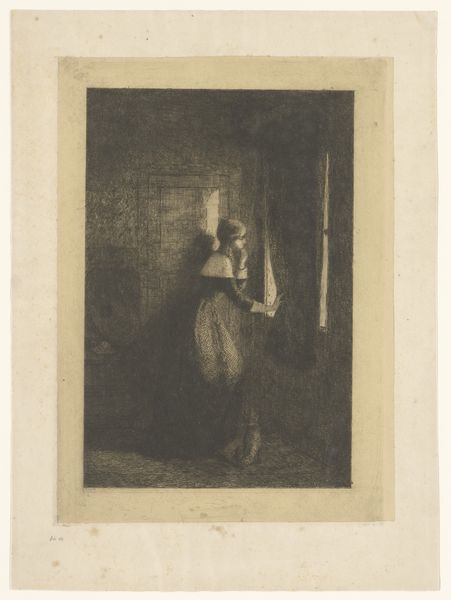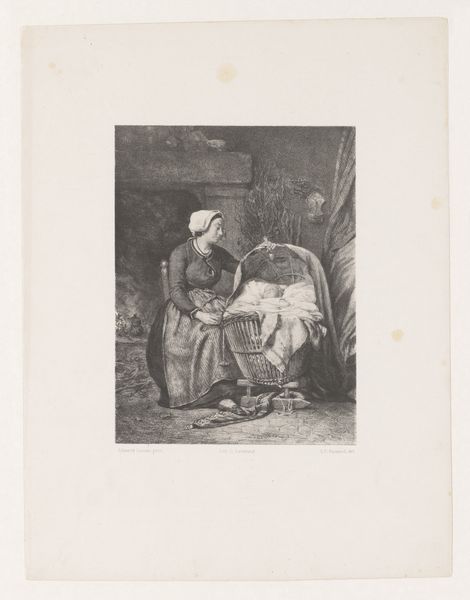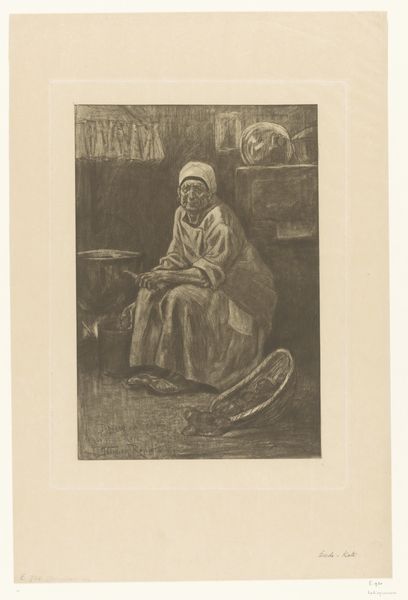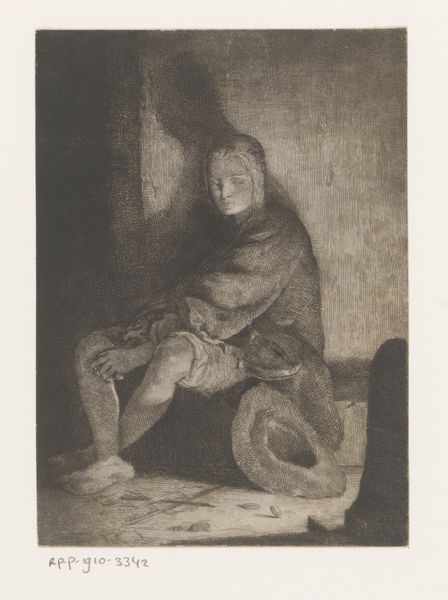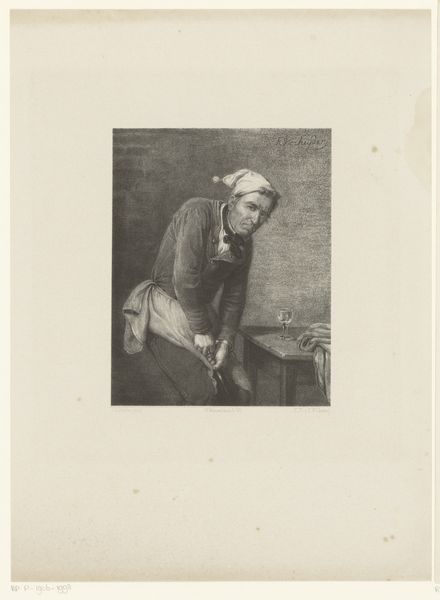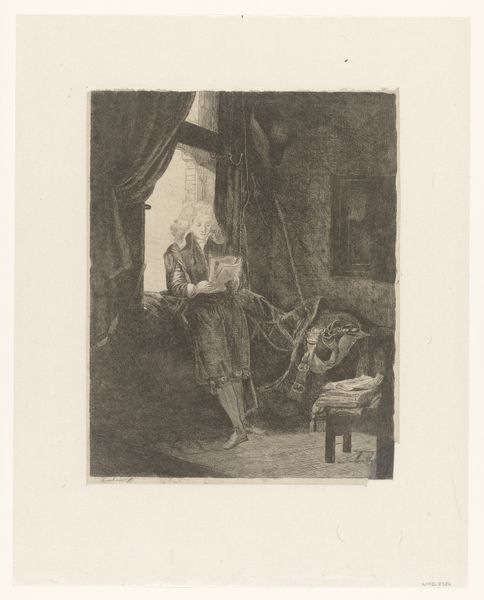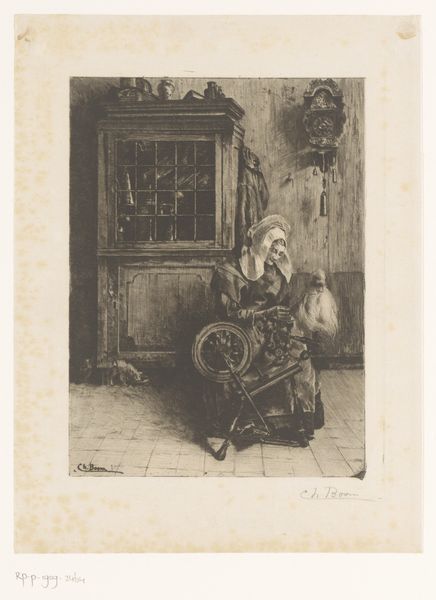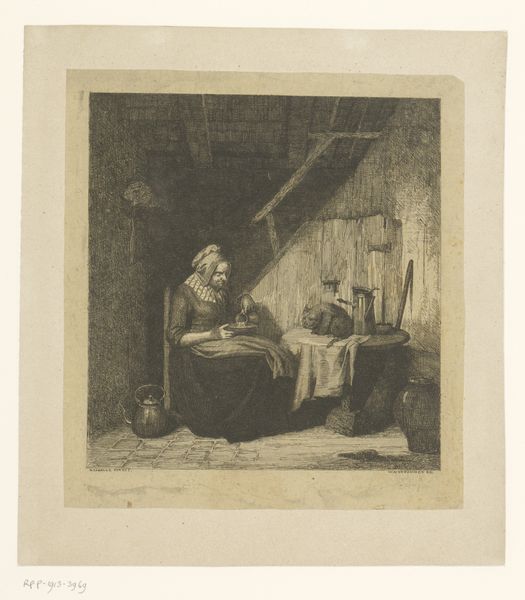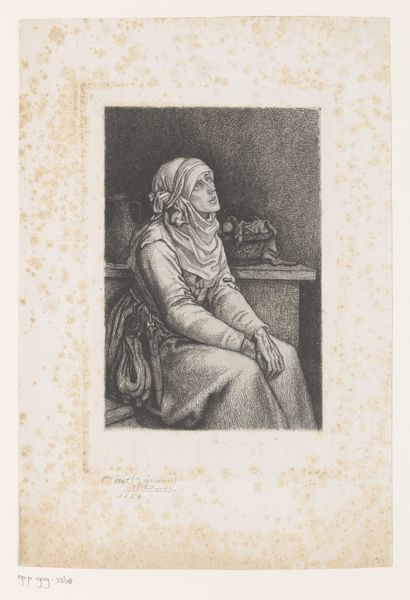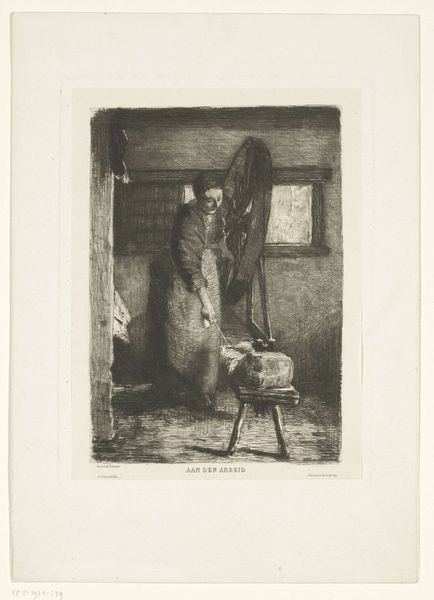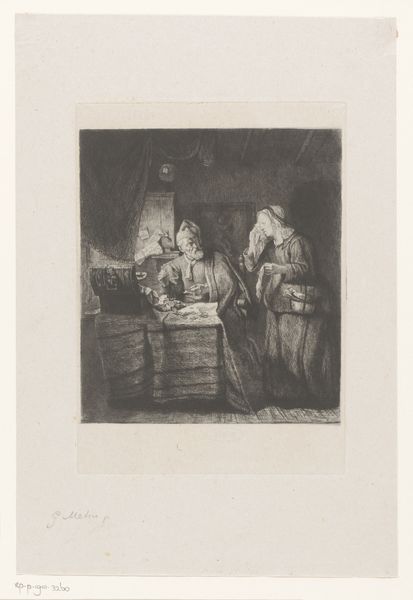
drawing, print, paper, engraving
#
portrait
#
drawing
#
medieval
#
narrative-art
# print
#
paper
#
folk-art
#
genre-painting
#
engraving
#
realism
Dimensions: height 208 mm, width 164 mm
Copyright: Rijks Museum: Open Domain
Editor: Here we have Léopold Flameng’s "Woman at the Spinning Wheel," a print made sometime between 1841 and 1910. The detail is incredible! There's almost a sense of quiet industry to it. What’s your interpretation of this work? Curator: It evokes several interconnected themes relevant to women's history. We need to consider the historical context, the role of women and labor. This image isn’t simply a picturesque scene; it’s a potent reminder of the labor that defined women's lives for centuries, particularly in rural communities. Think about the radical shift to industrialized production and how women in labor, particularly those in rural spaces, were impacted and what spinning and weaving meant for women’s independence. What message is being put forth when this mode of living is displayed in art? Editor: So, this isn’t just an image of someone spinning, but something much bigger. How does Flameng's approach speak to the changes occurring at that time? Curator: Flameng’s hyperrealism could be interpreted as both romanticizing and documenting a vanishing way of life. As industrialization gathered pace, these traditional skills and ways of living became increasingly marginalized. By depicting this woman, is he valorizing her skills, or sentimentalizing a lost past? Is he challenging viewers to think critically about progress and who it leaves behind? Editor: It’s interesting to think about it not just as a picture, but as a social statement. I see that now in the way she's positioned in the frame, alone and quietly working. Curator: Exactly. We can even question who is centered in this portrayal of rural women. Is it produced through the artist’s perspective or the sitter’s agency? Editor: That really gives me a lot to consider about the piece. It feels like I’m just starting to understand how much more there is to art than just what’s on the surface. Curator: Indeed! Art becomes much more meaningful and powerful when we consider its wider implications.
Comments
No comments
Be the first to comment and join the conversation on the ultimate creative platform.
